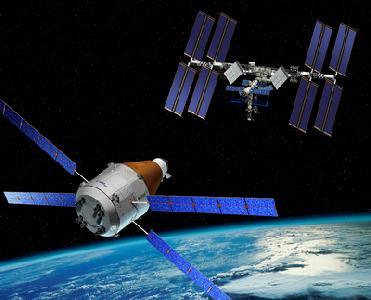
This photograph, acquired in February 1984 by an astronaut aboard the space shuttle, shows a series of mature thunderstorms in southern Brazil. – Photo credit: NASA
WASHINGTON (BNS): Aircraft passing through remote ocean regions will know about severe storms and turbulences beforehand as scientists are working on developing a prototype system that will provide updates on such storms.
The project, funded by NASA, will develop the system by combining satellite data and computer weather models with cutting-edge artificial intelligence techniques. The goal is to identify and predict rapidly evolving storms and other potential areas of turbulence, the US space agency said in a statement.
Scientists at the National Center for Atmospheric Research (NCAR) in Boulder, Colo., in partnership with colleagues at the University of Wisconsin, are developing a system.
�Turbulence is the leading cause of injuries in commercial aviation. This new work to detect the likelihood of turbulence associated with oceanic storms using key space-based indicators is of crucial importance to pilots,� said John Haynes, programme manager in the Earth Science Division's Applied Sciences Programme at NASA Headquarters here.
The new system will help guide pilots away from intense weather. A variety of NASA spacecraft observations are being used in the project, including data from the Terra, Aqua, Tropical Rainfall Measuring Mission, CloudSat and CALIPSO satellites.
The prototype system will identify areas of turbulence in clear regions of the atmosphere as well as within storms. It will be ready for testing by next year.
Pilots on selected transoceanic routes will receive real-time turbulence updates and provide feedback. When the system is finalized, it will provide pilots and ground-based controllers with text-based maps and graphical displays showing regions of likely turbulence and storms.
�Pilots currently have little weather information as they fly over remote stretches of the ocean, which is where some of the worst turbulence occurs,� said scientist John Williams, one of the project leads at NCAR.
�Providing pilots with at least an approximate picture of developing storms could help guide them safely around areas of potentially severe turbulence,� he said.
NCAR currently provides real-time maps of turbulence at various altitudes over the continental United States. Williams and his colleagues are building on this expertise to identify turbulence over oceans. The team has created global maps of clear air turbulence based on global computer weather models that include winds and other instabilities in the atmosphere.
The next step is to pinpoint areas of possible turbulence within and around intense storms. For this, the team will study correlations between storms and turbulence over the continental United States, where weather is closely observed, and then infer patterns of turbulence for storms over oceans.
While providing aircraft and ground controllers with up-to-the-minute maps of turbulence, the NCAR team is also turning to an artificial intelligence technique � �random forests� � to provide short-term forecasts.
Random forests, which have proven useful for forecasting thunderstorms over land, consist of many decision trees that each cast a yes-or-no �vote� on crucial elements of the storm at future points in time and space.
This enables scientists to forecast the movement and strength of the storm during the next few hours.
�Our goal is to give pilots a regularly updated picture of the likely storms ahead as they fly over the ocean, so they can take action to minimize turbulence and keep their aircraft out of danger,� explained NCAR scientist Cathy Kessinger, a project team member.
 Previous Article
Previous Article Next Article
Next Article












The Indian Air Force, in its flight trials evaluation report submitted before the Defence Ministry l..
view articleAn insight into the Medium Multi-Role Combat Aircraft competition...
view articleSky enthusiasts can now spot the International Space Station (ISS) commanded by Indian-American astr..
view article